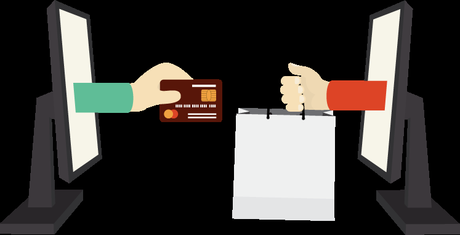Do you know your bounce rate? Do you know what percentage of your precious visitors leave your site after a few seconds?
If Google sends you the majority of your traffic, expect more than 75% of your visitors to vaporize immediately.
Because among this 75 %, there are prospects perfectly qualified for your product or service.
In other words, you lose sales because your customer slams the door in your face before you can explain what you have to offer.
I'm the man with the ax
Suppose you come to me and say, "Mel Dovis, I want you to improve my conversion rate on my new visitors."Here is my first reflex: I would take an ax, and I would start cutting your site into pieces.

Clarity before anything
My first reflex in front of a page I want to improve conversions is to ask myself: "What can I remove on this site?"
Imagine that I am a new visitor to your site: when I go scan the page for up to 5 seconds in search of an interesting item. If nothing clings my interest, oven, I already closed the tab.
Then you have only 5 seconds to communicate your USP (Unique Selling Proposition).
If I am distracted by a secondary element of the page during these 5 seconds (automatic slider, Facebook plugin, sidebar), you are lost.
And if the USP introduces the slightest bit of confusion in my mind: it's kaput.
Your conversion rate is guided by your Value Proposition (USP) and propelled by the Emergency (which drives your visitor to act now).
It is pulled up by the Relevance and Clarity of your offer, and down by the Anxiety and Distractions that assail your visitor. Today we will be interested in the opposing forces of Clarity and Distraction.
1) Choose your USP: Unique, Clear, Desirable
I will assume, as readers of this esteemed site, you already know what a USP is, and that you have one in reinforced concrete. It is your USP that will hold your visitor in the first 5 seconds, explaining why your site is important.
2) 1 page = 1 objective
Even with an excellent USP, you can still stumble if you try to accomplish too many things at once. Remember: as a visitor, I am reluctant to do anything. So if you ask me both:
Subscribe to my newsletter
Read my page About
Like me on Facebook
Follow me on Twitter
Here are the links to my partners
Will quickly have the head turning and return watching cute kitten videos on YouTube.
You cannot hold me back on your page by bombarding me with options. You have to decide which is the Most Important Action and make it perfectly obvious to the exclusion of everything else.
3) Communicate by Design: Visual Hierarchy
Now that you know which is the Most Important Action on your page, you must clearly communicate it to your visitor. For that, you will use a design concept called the Visual Hierarchy.
The Visual Hierarchy allows you to make the most important elements of your page unavoidable, using visual cues such as:
The home page of the AirBnbrental site is a good example of Visual Hierarchy
4) Eliminate the jargon
Remember: you only have 5 seconds, during which I'm probably rethinking the last episode of Secret Story.
The homepage of Mailchimp email marketing software is a good example.
Instead of stunning its visitor with the long list of its features, Mailchimp simply promises to allow you to send out better emails.
5) Use heatmaps to eliminate unnecessary options
You have now highlighted the most important elements and you communicate them in a clear way. What to do with all these secondary options that are now relegated to the background?
This is the time to take out our ax and eliminate unnecessary options that only distract your visitor from the Most Important Action.
But here's the big question: How do you know which options are useful, and what options are just a distraction?
Heatmaps!
If you are not familiar, a heatmap is a visual representation of your site that tells you where your visitors are clicking. By generating heatmaps for your own site, you can find out which options are popular with your visitors, and which ones are unnecessary.
6) Use the Law of distractions to better convert
Law of distractions: The more your visitor approaches the sale, the less you offer him options.
The Law of distraction is the reason why one always withdraws the navigation menu and the sidebar on a squeeze page: one wants to concentrate the attention of the visitor on the form of the collection of emails. You can see the Law of distractions in action when you go through the buying process on Amazon.
The more you sink into the sales tunnel, the more options Amazon offers are reduced. At the moment of seeing the basket, almost all the elements have disappeared. And the checkout page gives you only one option: Buy.
Now, it's up to you to apply what you learned today.
To make these processes even easier, you can opt for an all-in-one solution from companies like Gossip Web Design, a company that specializes in digital marketing and web design Melbourne, Australia. These full-service companies can help you with every facet of your online business - from web design to online marketing. This is a great option for established businesses that are looking to extend their reach on the internet.
Author Bio
I am Mel Dovis - A Developer, Designer, Blogger and Photographer. I always love to share my knowledge and research about Technology, Blogging, Tutorials, Software's and Quick Tips.
RELATED POSTS THAT YOU MIGHT LIKE


